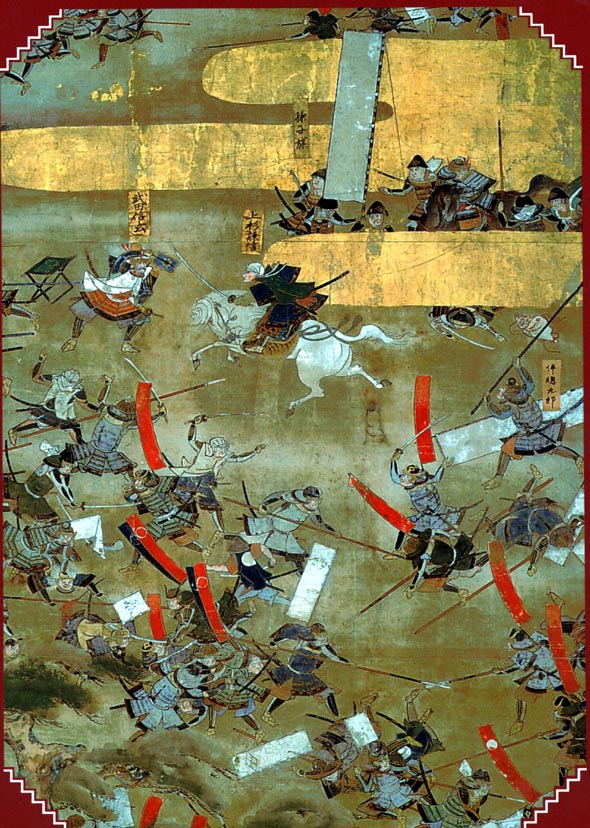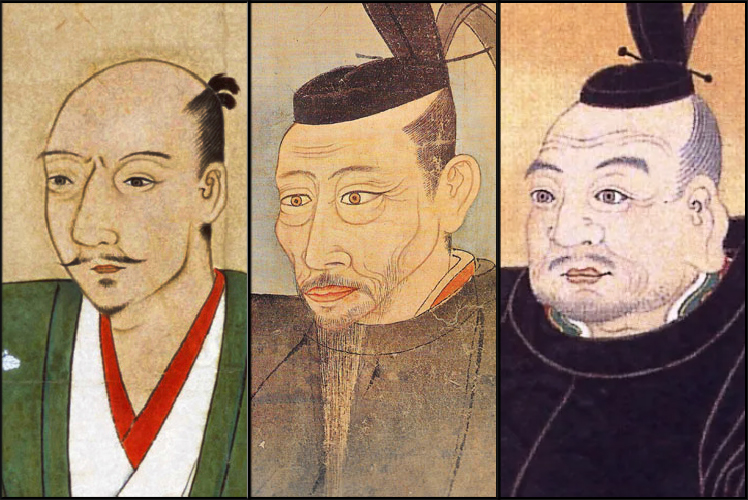If you’ve ever been fascinated by epic battles, cunning warlords, and the rise of the samurai, then the Sengoku period (戦国時代) (1467–1600) is the historical era for you. Also known as the “Warring States” period, it was a time when Japan was in constant upheaval, with regional lords, or daimyō (大名), vying for power and control over the country. Think of it as Japan’s Game of Thrones only with more swords and less dragons!
So, What Sparked All This Chaos?

The Sengoku period began with the Ōnin War (応仁の乱) (1467-1477), a civil war that spiraled out of control and weakened the central authority of the Ashikaga shogunate. With no strong leader to unite Japan, regional daimyō saw an opportunity to expand their influence. They began fighting each other for territory, alliances were made and broken, and soon enough, it was every daimyō for himself.
One thing to remember about this era is that it wasn’t just about brute strength. Warlords had to be as crafty as they were courageous, using political marriages, betrayals, and alliances to outmaneuver their enemies. It’s basically medieval Japan’s version of strategic chess, with lives on the line.
Enter the Samurai
This period saw the rise of the samurai class to even greater prominence. Samurai were more than just warriors they were the backbone of the daimyō’s forces. Known for their fierce loyalty and code of honor (bushidō), they became central figures in the battles and intrigue of the Sengoku period. But this was also a time when samurai had to adapt. Traditional cavalry combat was giving way to new technologies like the arquebus, a matchlock gun introduced by the Portuguese. Yes, firearms were changing the face of warfare even back then!
The Big Players

While there were many warlords throughout the Sengoku period, three figures stand out: Oda Nobunaga, Toyotomi Hideyoshi, and Tokugawa Ieyasu. They are often referred to as the “three unifiers” of Japan, and they played pivotal roles in bringing an end to the chaos.
- Oda Nobunaga (織田信長)was the first to make significant strides in unifying Japan. He was ruthless, innovative, and willing to use any means to crush his enemies. Unfortunately, he met a sudden end in 1582 when one of his generals betrayed him.
- Toyotomi Hideyoshi (豊臣 秀吉)took up the mantle after Nobunaga’s death. Coming from humble beginnings, Hideyoshi was a brilliant tactician and managed to consolidate most of Japan under his rule. However, he failed to secure a lasting dynasty, which opened the door for his successor.
- Tokugawa Ieyasu (徳川 家康) was the final piece of the puzzle. After Hideyoshi’s death, Ieyasu outmaneuvered his rivals and won the decisive Battle of Sekigahara in 1600, establishing the Tokugawa shogunate. This shogunate would rule Japan for over 250 years in a period known as the Edo period, which brought long-lasting peace.
Why the Sengoku Period Still Captivates Us
The Sengoku period is so compelling because it was a time of constant change, with larger-than-life characters and endless intrigue. You’ve got warlords wielding power, samurai battling for honor, and political dramas that would make any modern-day soap opera look tame.
It’s no wonder that this period has inspired countless movies, TV shows, books, and even video games. Titles like Fx’s TV series Shōgun and Nioh are perfect examples of how the Sengoku period continues to live on in pop culture.
To Sum It Up
In short, the Sengoku period was an era when chaos reigned, but out of it emerged some of Japan’s most legendary figures and a unified country. Whether you’re a history buff or just enjoy a good story, the Sengoku period offers plenty of drama, strategy, and samurai action to dive into.
So, next time you see a katana or a suit of samurai armor, remember they represent more than just the cool aesthetics of feudal Japan. They’re symbols of a time when power, loyalty, and strategy were all that mattered.
Sources:
Turnbull, Stephen. Samurai Warfare. London: Cassell, 2002.
Bryant, Anthony J. Sekigahara 1600: The Final Struggle for Power. Osprey Publishing, 1995.
Sansom, George. A History of Japan 1334-1615. Stanford University Press, 1961.
Totman, Conrad. Early Modern Japan. University of California Press, 1993.
Hall, John Whitney. Japan: From Prehistory to Modern Times. University of Michigan Press, 1991.
Turnbull, Stephen. The Samurai Sourcebook. London: Cassell, 1998.
Berry, Mary Elizabeth. Hideyoshi. Harvard University Press, 1982.
Sengoku, Jidai. “The Sengoku Jidai: War
Image Sources:
By Artist’s: Kanō Sōshū – Kanō Mitsunobu – Kanō Tan’yū – (File:Odanobunaga.jpg) and (https://it.wikipedia.org/wiki/File:Portrait_of_Toyotomi_Hideyoshi.jpg) and (File:Tokugawa_Ieyasu2_full.JPG), Public Domain, Link
Leave a Reply